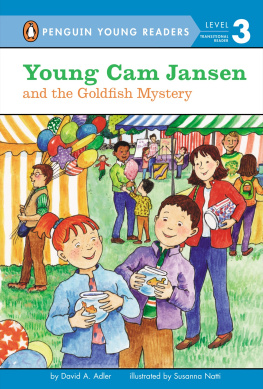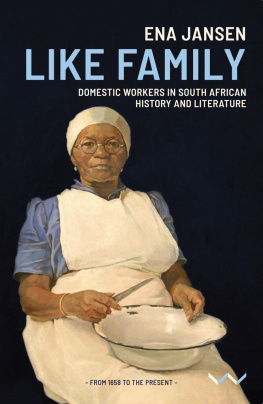LETTERS
TO MY CHILDREN
JONATHAN
JANSEN
LETTERS
TO MY CHILDREN
TWEETS TO MAKE YOU THINK

Copyright Jonathan Jansen 2012
All rights reserved. No part of this book may be reproduced or transmitted in any form or by any means, electronic or mechanical, including photocopying, recording or any information storage or retrieval system, without permission from the copyright holder.
ISBN 978-1-920434-34-2
e-ISBN 978-1-920434-70-0
First edition published jointly by Bookstorm and Pan Macmillan South Africa 2012
This edition published by Bookstorm 2014
Bookstorm (Pty) Ltd
PO Box 4532
Northcliff 2115
Johannesburg
South Africa
www.bookstorm.co.za
Edited by Pat Botes
Proofread by Ada Thorne
Cover design by mr design
Cover photo by Stephen Collett
To the mother of my children,
Grace, the real pedagogue

Table of Contents
Before you start
Social media jargon
The letters in this collection were originally sent via Facebook and Twitter, I realise that not all the readers of this book will be familiar with these social networks, so here is a quick list of common jargon to help you decipher this new way of communicating (if you are already familiar with these skip over this section):
@: In Twitter the @ sign is used to call out usernames in tweets, like this: Hello @Twitter! When a username is preceded by the @ sign, it becomes a link to a Twitter profile.
Avatar: The personal image uploaded to your Twitter profile (it could be a picture of you or of something else).
Blog: A web log (you can use the word as a noun or a verb) an online diary or column written by an individual.
Chat: A Facebook feature that lets users talk with friends (other users they know) who are using Facebook at the same time as they are.
Comment:Facebook users can comment on things that their friends say.
Direct message: On Twitter a direct message is a private message between the sender and the recipient.
Facebook: A network to share information with family, friends and other people you know or who know you.
Fan: A person who has joined a Facebook page because they like what that page represents.
Favorite (verb): On Twitter you can mark a tweet as one of your favourites by clicking the yellow star next to the message.
Follow (verb): To follow someone on Twitter is to subscribe to their tweets or updates on the site.
Follower (noun): A follower is another Twitter user who has followed you.
Following: Your following number shows the number of other Twitter users you have chosen to follow.
Friend: A person who has connected with a Facebook user, usually by invitation. Generally you have to be Facebook friends before someone can see what you have written.
Handle: A users Twitter handle is the username he or she has selected.
Hashtag: In Twitter the # symbol, called a hashtag, is used to mark keywords or topics in a tweet. It was created by Twitter users as a way to categorise messages.
Like: The Like button occurs next to content on Facebook and allows users to let others know they appreciate that content (a video, a comment, a photo or something else).
Mention (noun): When you mention (verb) another Twitter user in your tweet by including the @ sign followed directly by their username. It also refers to tweets in which your username was included.
Poke (noun or verb): You can give a friend on Facebook a virtual poke to say hello, congratulate them, etc.
Profile: A Facebook profile is a Facebook site created by people who want to share information about themselves and socialise with others. A Facebook profile shows a users personal information and their interactions with friends. A Twitter profile is a Twitter page displaying information about a user, as well as all the tweets they have posted from their account.
Reply: On Twitter a tweet posted in reply to another users message.
Retweet (noun): A tweet by another Twitter user, forwarded to you by someone you follow. Often used to spread news or share valuable findings on Twitter.
Retweet (verb): To retweet, retweeting, retweeted. The act of forwarding another Twitter users tweet to all of your followers. Abbreviated to RT.
Share:Facebook users can share content from their friends pages with other friends.
Status: Your Facebook status is a feature which allows you as user to inform your friends of your current whereabouts, actions or thoughts.
Status update: Changing your status on Facebook sends a message to your friends about your new thoughts, etc.
Tag: On Facebook you can mark a photo or video with text that identifies the person featured in the photo or video.
Trending topic: A subject algorithmically determined to be one of the most popular on Twitter at the moment.
Tweet (noun): A message posted via Twitter containing 140 characters or fewer.
Tweet (verb): Tweet, tweeting, tweeted. The act of posting a message, often called a tweet, on Twitter.
Tweeter: A Twitter account holder who posts and reads tweets. Also known as twitterers.
Twitter: An information network made up of 140-character messages from all over the world.
Twitter name: The name a user calls him or herself on Twitter.
Twitterer: A Twitter account holder who posts and reads tweets. Also known as a Twitter user.
Unfollow: To stop following another Twitter user.
Unfriend: To remove a Facebook user from your list of Facebook friends so they can no longer see your content.
Wall: Every Facebook profile has a wall which allows friends and users themselves to post messages for all to see.
Introduction
Blame my favourite writer. You have not felt writing unless youve read Maya Angelou, the great African-American author, poet and activist who wrote a famous book called I know why the caged bird sings. But it was her Letter to my daughter that really got my attention. As I read her letter I could not think of a greater gift to offer my own children than the life lessons Ive learnt from hard experience. Now of course our parents (and other elders) leave all of us letters, so to speak, by which I mean those sayings we call to mind in later years in the form of my mother always used to say that or my fathers favourite line was , and so on.







